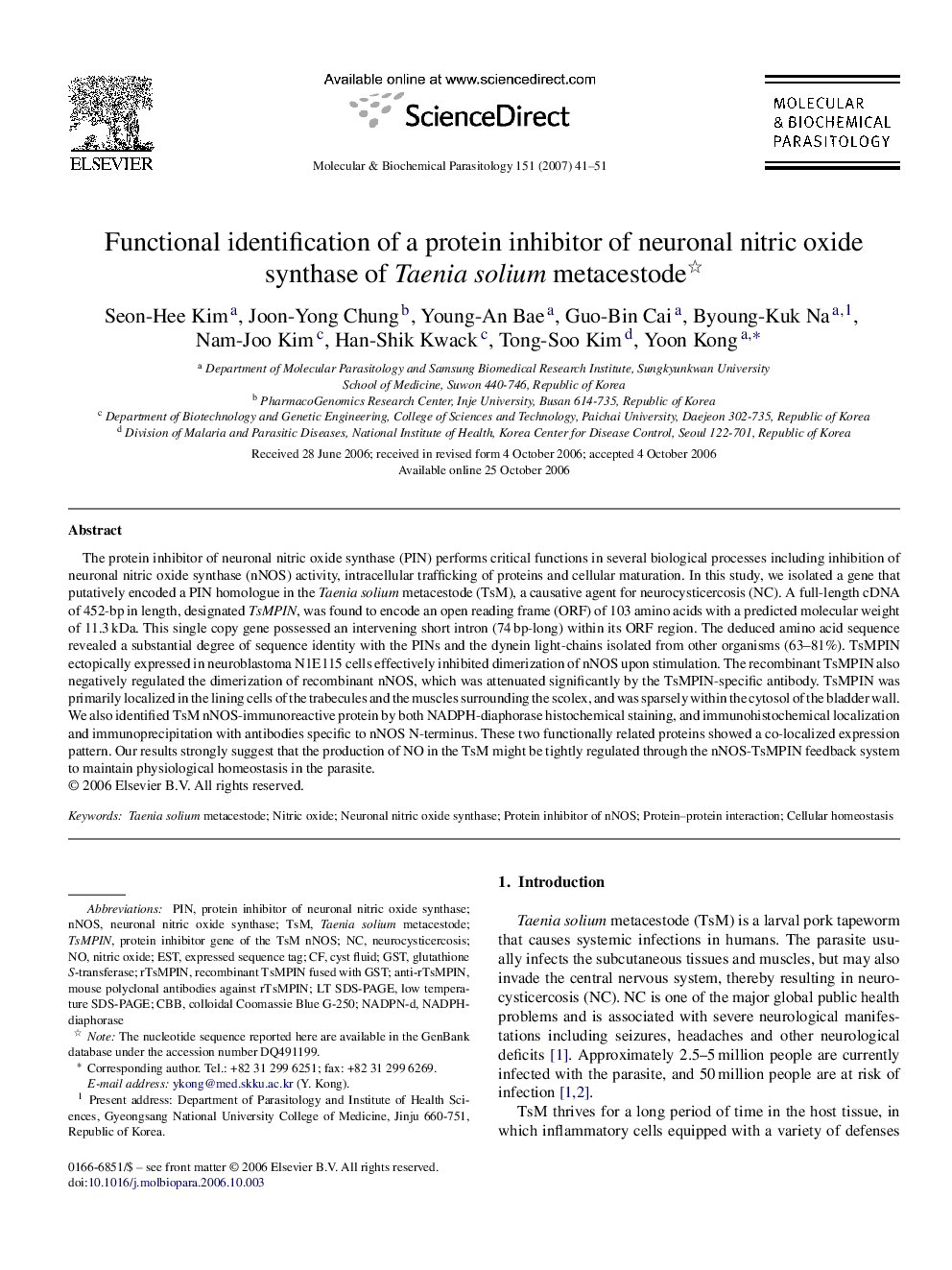| Article ID | Journal | Published Year | Pages | File Type |
|---|---|---|---|---|
| 5916209 | Molecular and Biochemical Parasitology | 2007 | 11 Pages |
The protein inhibitor of neuronal nitric oxide synthase (PIN) performs critical functions in several biological processes including inhibition of neuronal nitric oxide synthase (nNOS) activity, intracellular trafficking of proteins and cellular maturation. In this study, we isolated a gene that putatively encoded a PIN homologue in the Taenia solium metacestode (TsM), a causative agent for neurocysticercosis (NC). A full-length cDNA of 452-bp in length, designated TsMPIN, was found to encode an open reading frame (ORF) of 103 amino acids with a predicted molecular weight of 11.3Â kDa. This single copy gene possessed an intervening short intron (74Â bp-long) within its ORF region. The deduced amino acid sequence revealed a substantial degree of sequence identity with the PINs and the dynein light-chains isolated from other organisms (63-81%). TsMPIN ectopically expressed in neuroblastoma N1E115 cells effectively inhibited dimerization of nNOS upon stimulation. The recombinant TsMPIN also negatively regulated the dimerization of recombinant nNOS, which was attenuated significantly by the TsMPIN-specific antibody. TsMPIN was primarily localized in the lining cells of the trabecules and the muscles surrounding the scolex, and was sparsely within the cytosol of the bladder wall. We also identified TsM nNOS-immunoreactive protein by both NADPH-diaphorase histochemical staining, and immunohistochemical localization and immunoprecipitation with antibodies specific to nNOS N-terminus. These two functionally related proteins showed a co-localized expression pattern. Our results strongly suggest that the production of NO in the TsM might be tightly regulated through the nNOS-TsMPIN feedback system to maintain physiological homeostasis in the parasite.
